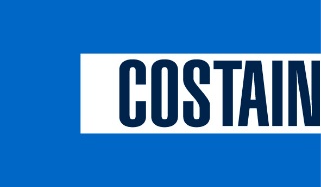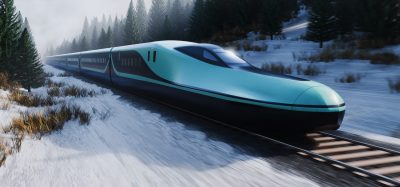Attention to detail: creating a modern regional train
Posted: 26 September 2009 | | No comments yet
Approximately seven years ago, Skånetrafiken began thinking of renewal and completion of its Pågatågen rolling stock. Pågatågen is the name of the regional train service in Skåne – the southernmost county of Sweden. The service is presently performed with 26 X11 EMUs, an ASEA/ABB/ADTranz/Bombardier construction from the 70s, which has a seating capacity of 180 and a top speed of 140km/h. The X11s carry approximately 13.5 million customers annually and the travelling figures have grown rapidly since the turn of the century and it is foreseen to continue to grow, especially when new lines and stations are taken into service.
Approximately seven years ago, Skånetrafiken began thinking of renewal and completion of its Pågatågen rolling stock. Pågatågen is the name of the regional train service in Skåne - the southernmost county of Sweden. The service is presently performed with 26 X11 EMUs, an ASEA/ABB/ADTranz/Bombardier construction from the 70s, which has a seating capacity of 180 and a top speed of 140km/h. The X11s carry approximately 13.5 million customers annually and the travelling figures have grown rapidly since the turn of the century and it is foreseen to continue to grow, especially when new lines and stations are taken into service.
Approximately seven years ago, Skånetrafiken began thinking of renewal and completion of its Pågatågen rolling stock. Pågatågen is the name of the regional train service in Skåne – the southernmost county of Sweden. The service is presently performed with 26 X11 EMUs, an ASEA/ABB/ADTranz/Bombardier construction from the 70s, which has a seating capacity of 180 and a top speed of 140km/h. The X11s carry approximately 13.5 million customers annually and the travelling figures have grown rapidly since the turn of the century and it is foreseen to continue to grow, especially when new lines and stations are taken into service.
A major impact on the increased need for rolling stock is the City Tunnel of Malmö – a 17km, €1 billion railway connection through Malmö – the regional capital of Skåne. It connects the Southern Trunk Line and Malmö Central Station (today a dead-end station) with the Öresund Fixed Link to Copenhagen. Two new stations will bring new possibilities to reach other attractive parts of Malmö by train. It is calculated that when the City Tunnel is taken into the network, travelling by train in the Malmö area will momentarily increase by approximately 15% – but the long-term effects is of course significantly bigger.
After a thorough analysis, based on a service concept in harmony with Skånetrafiken’s other train service – the Öresundstågen – the size, performance profile and number of units was decided. The future travelling and traffic pattern was analysed, based on the recently adopted Strategy for Train Service Development 2012-2037, and thus the optimal size and number of trains was decided.
Skånetrafiken operates relatively short travelling times and since station stops occur quite frequently on our Pågatågen lines, acceleration and deceleration are more important than maximum top speed. It therefore had to be a modern, powerful, silent, comfortable EMU, well adapted to the standard platform height in southern Sweden of 590mm ator. According to a general strategic decision, Skånetrafiken shall acquire technical systems, modern but not in the foremost front line; it therefore should be a technically well-tried train model. To cover the need in the nearest future up to 2012, Skånetrafiken needs approximately 50 EMUs, each with a seating capacity of approximately 250. This number covers both service growth and the replacement of the current X11 rolling stock.
After an international procurement, performed in cooperation with the Swedish ROSCO AB Transitio, Skånetrafiken has chosen the developed 4-car Nordic version of the Alstom Coradia Lirex. An earlier and more basic version of this is the 6-car X60 in the Stockholm area. Forty-nine of these X60 units are to be delivered from November 2009 through to June 2012. Options are available for another 59 units. The present order value is approximately worth €250 million.
Today’s customer is used to the comfort of the car and it’s with the car we must compete. We therefore must offer a good service with short travelling times and good travelling environment, including for example seating, climate, noise, lighting and working facilities. Safety is of course a basic requirement for all customers, but especially for the disabled. All customers shall meet an environment that is so appealing that they will choose the Pågatågen, not only because they have to, but simply because it is the best way to travel. Skånetrafiken has put a lot of effort in getting an attractive train with focus on comfort, design and availability for the disabled – not only for people with reduced mobility, but also for those who have difficulties seeing and hearing. We also believe that offering a pleasant environment to the customer, created with scrutiny and consideration reduces the urge of performing graffiti and vandalism.
Skånetrafiken puts a lot of concern in the environment that meets the customer. A Design Book, describing the guide lines for both interior and exterior design, was therefore created and was also an important part of the contract with Alstom. The Design Book describes the overall purpose and expression of the train design and also more specifically the demands for e.g. seating comfort. A ‘hobbyhorse’ of mine is the lighting design, in my opinion an often neglected item. The lighting can substantially contribute to achieve a functional, pleasant and safe travel environment. A lot of ideas to especially improve and develop the interior features occurred during the design and early stages of the project phase. In order to test these ideas in reality, a full scale mock-up was built in a workshop in Malmö. In tight cooperation with designers from both Alstom and Skånetrafiken, a number of features were tested in this mock-up. The seats, the toilet, the wheel chair place and the train master compartment were specifically trialled.
The features were repeatedly tested in the mock-up. We invited representatives for various disabled organisations, our own employees, other customers, the operator’s staff and Swedish authorities. After one show, the mock-up was up graded and afterwards received viewpoints to which another show was performed. This went on in three ‘official’ rounds. A numerous number of viewpoints were handled, down to the smallest detail, and a state-of the art-handbook was agreed with Alstom. Of course, not every detail can be agreed on in such an early stage, a few months after signing the contract, so this work has continuously progressed since then. The mock up was transported to the Alstom site in Salzgitter, Germany and has then served as a testing bench there.
The seat, from a customer’s point of view, is the most important single object of interest in the train, and was additionally subject to a creative process in cooperation with the sub supplier Compin. During intense workshops, a totally new seat was created. Another ‘hobbyhorse’ of mine is the benefit of having cinema/theatre seats in a regional or local train. It strongly enhances the passenger flow in the train, especially in services with frequent stops: a passenger sat on an aisle seat can unhindered let a window seat passenger pass, without self stepping out in the aisle. Besides, it enhances the cleaning work. Consequently, the decided seat is slim cinema seat with good comfort and ergonomics. Each seat has a head rest and an armrest that automatically folds up with the seat cushion when unloaded. In row seating, each seat has a foldable table, a jacket hook and a bag hook (ladies do not want to put their bag on the floor, so they might otherwise put it on the seat beside) and each 2-seater has a waste paper bin. In opposite seating there’s a fixed table with an integrated waste bin. The seat is arranged in a 2+2 formation with a wide aisle between, except for the compartments at each end of the train, where they are arranged in a 3+2 formation. Close to the entrances in each car, there’s special seat with higher seating height, especially suitable for the elderly.
The toilet was also subject to a lot of work and testing. In a very small space it shall be easily available for all customers, contain several functions, be comfortable and secure, easy to clean and maintain whilst still looking attractive. So, now we’ll get a toilet module with e.g. a wide, push button manoeuvred electrical door, nursing table, suitable lighting, double mirrors, and a device for communicating with the staff and special feature for those who suffer from a hearing impairment: a voice confirmation when the door is locked.
I mentioned the lighting as being very important for the impression of the train. The light should not be like in a hospital corridor, with naked fluorescent lamps in a row. It shall just be there where and when you need it. The general lighting should be indirect or else concentrated to the aisles and vestibules. When you sit down it should be soft, except when you want to read or work; then you should have access to concentrated light at your seat. At first, we had many radical ideas, based on newer illumination possibilities, but due to technical restrictions we had to accept a slightly ‘slimmer’ version. Nevertheless, the train is equipped with several interesting features: of course separate reading lights at each seat, an aisle and vestibule lighting that has full power when the train is at and around stations, but reduced when on the line. And, as the dot over the i, a dark blue, miniature LED-lamp armed starry heaven in the silent compartments. The entrance areas also have lights directed to the platform for safe debarking at dark hours.
Talking about silent compartments, in times when silence is an article in short supply, Skånetrafiken has collated customer feedback which confirms the great interest for a space where mobile phones and music players are banned along with loud conversations. Therefore, in each end of the train there are silent compartments.
In each middle car there’s a flex area. In the M1-car in connection with the toilet there’s a smaller one, primarily containing the wheelchair place with and adjacent space. The wheelchair place has a big table and its own emergency speech unit. In the M2-car there’s a bigger one with longitudinal seats at one side, which leaves a vast floor space for perhaps suitcases, bicycles and prams. A special bicycle holder was created; it allows seating beside and serves also as hand rail.
The almost-full-length-low-floor-train has all entrances in level with platforms. Besides the above mentioned features, the train is equipped with air conditioning, an information system with both light and sound, 220V sockets at each pair of seats, GSM repeater, infotainment system with 19″ displays, tactile push buttons with light and sound, hearing loop and emergency communication units in each vestibule. The features in most cases meet the demands of the TSI PRM, even if this is not mandatory for this train.
In parallel with this acquisition of new trains, a much focused project is a short-term adaption of platforms on all stations in Skåne, which is currently running. It’s a joint project with Banverket (the Swedish Railway Authority), Skånetrafiken and the municipalities involved. The adaption is, where appropriate, both in length and height to meet the demands of the new vehicles, which are constructed for 3-unit operation, and the platform standards in the region.
With this train, we are confident that we can meet the demands from our present and future customers. In combination with high punctuality, reliable information and selective sales offers, this will ensure continued customer growth for the Pågatågen.






